CLOSE ENCOUNTERS
Our year in the wilderness — researching giant seals, killer whales and raw nature
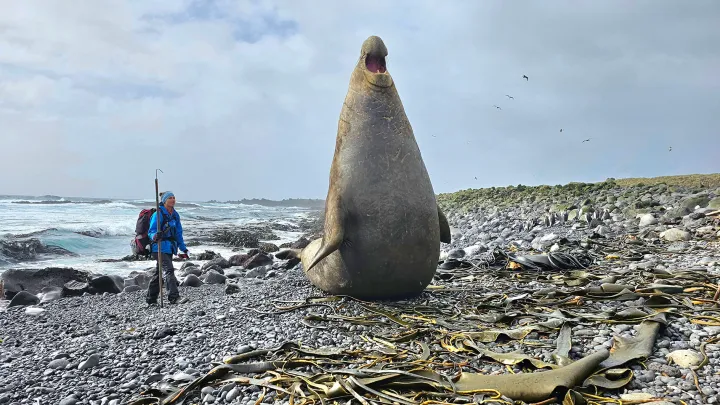
Dressed in nearly 30 items of clothing, Tammy Eggeling had to dance on the spot to keep warm in winter. Dylan Seaton was bitten by an angry elephant seal and the soles of Zafar Monier’s gumboots are wearing down fast from numerous circuits of Marion Island. The three Capetonians are nearing the end of their 13-month stint on the island as part of a four-decade-long research project to monitor the health responses of top sea predators to climate and environmental change in the Southern Ocean.
It sounds pretty idyllic … the notion of spending a year on a remote island, surrounded by some of the world’s most spectacular natural scenery and wildlife.
This is especially so in a world where more than half of humanity is cooped up cheek-by-jowl in dense city settlements. In such an era, very few of us get the chance to experience the prolonged solitude and silences in the pristine wilderness environments inhabited by our ancestors.
Marion Island, a tiny chunk of volcanic rock roughly halfway between here and Antarctica is just such a place. Roughly 20 km long and about 12km wide, there are currently only 18 people living at this isolated South African scientific settlement and weather research station. It also hosts an astonishing multitude of several million breeding seabirds and some very formidable mammals.
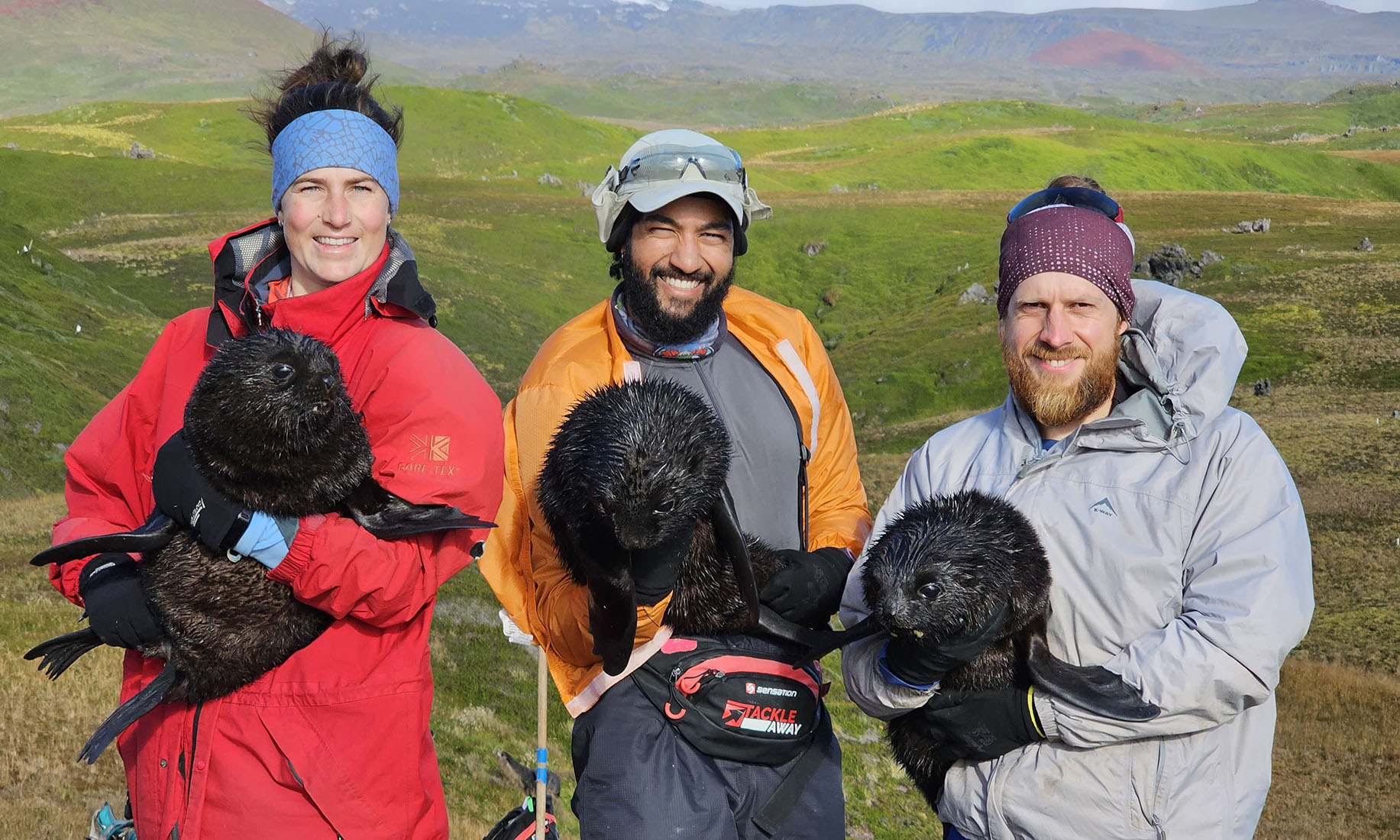
Tammy Eggeling, Zafar Monier and Dylan Seaton holding Antarctic fur seal pups at Marion Island. (Photo: Supplied)
Marion has a comfy base station stocked with plenty of food, fuel and modern conveniences. So, no one is going to starve or die from exposure within this cocoon.
But, not so fast.
Step out the doors in winter and you will be met by an icy blast of snow, rain or tiny pellets of flying ice. Even on “good” days in the summer months, the weather can change very fast. It is so windy that there is not a single tree on Marion or the neighbouring Prince Edward Island.
Instead, the landscape is dominated by waterlogged soil, bogs and mires, tussocky grassland and large expanses of herb-covered lava fields or bare volcanic rock that surround its highest point — Mascarin Peak at 1,230m.
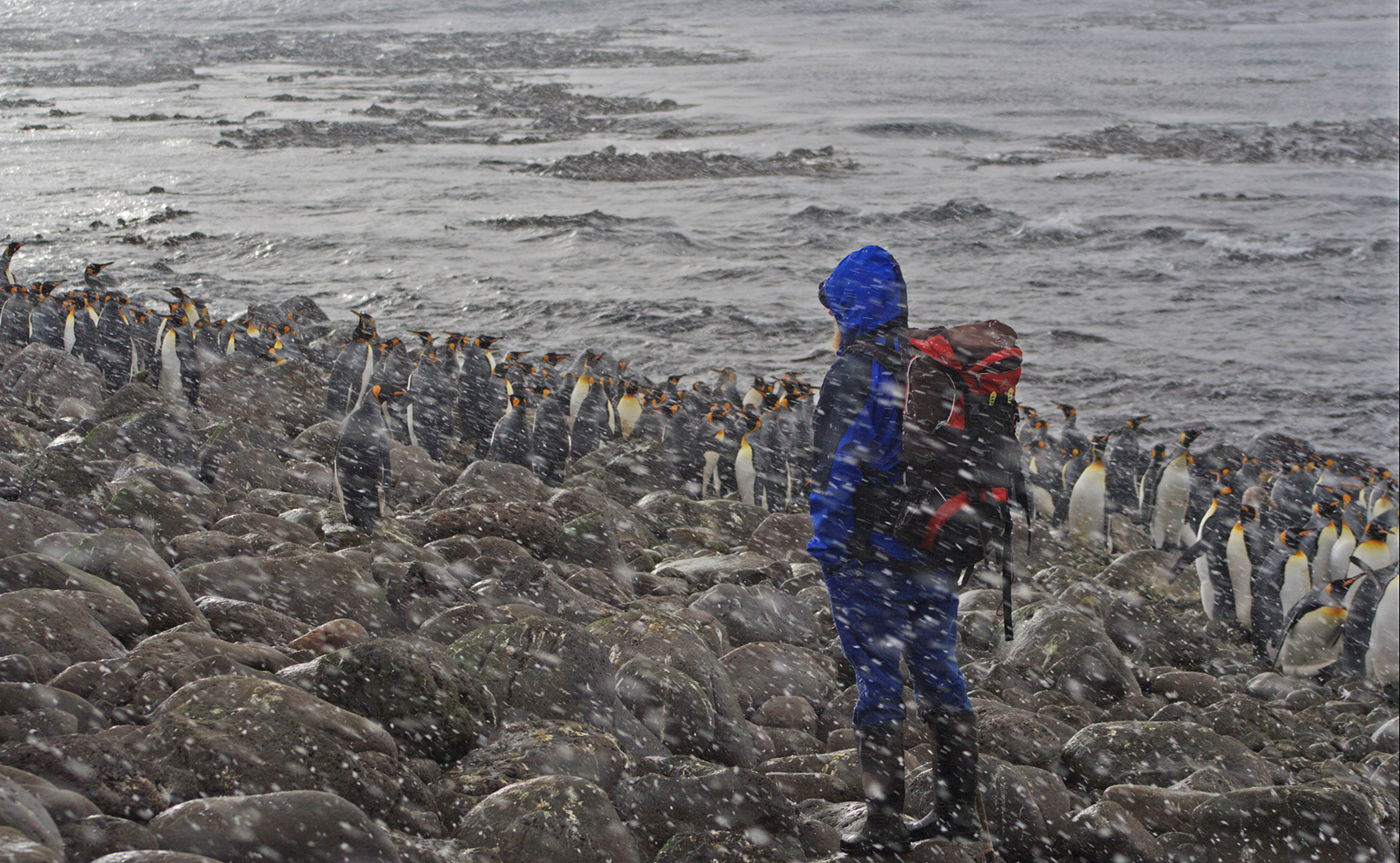
Blasts of snow, rain or tiny pellets of flying ice make life hard-going. (Photo: Nico de Bruyn)
Eggeling, a post-graduate zoology student who arrived on the island last April, describes the weather and the terrain as “unlike anything in our terms of reference”.
At the height of winter she was wearing up to 30 items of clothing to stave off the cold — sometimes dancing on the spot to music on a rocky outcrop just to keep warm as she kept a close watch on killer whales passing the island.
Typically, she would kit herself out in four pairs of socks, two to three layers of thermals, a pair of tracksuit pants and hoody, a scarf, a beany, ice goggles and two pairs of gloves, all topped off with a SA National Antarctic Programme weatherproof dungaree suit and a pair of gumboots.
“It is much warmer now, but even with all that kit on it was really freezing last winter and there were times when I would take my gloves and gumboots off to defrost my toes and fingers with a hot water bottle. Temperatures of between zero and 5℃ don’t sound too bad, but it really gets into your bones when you have been out in the open for eight to 10 hours.”
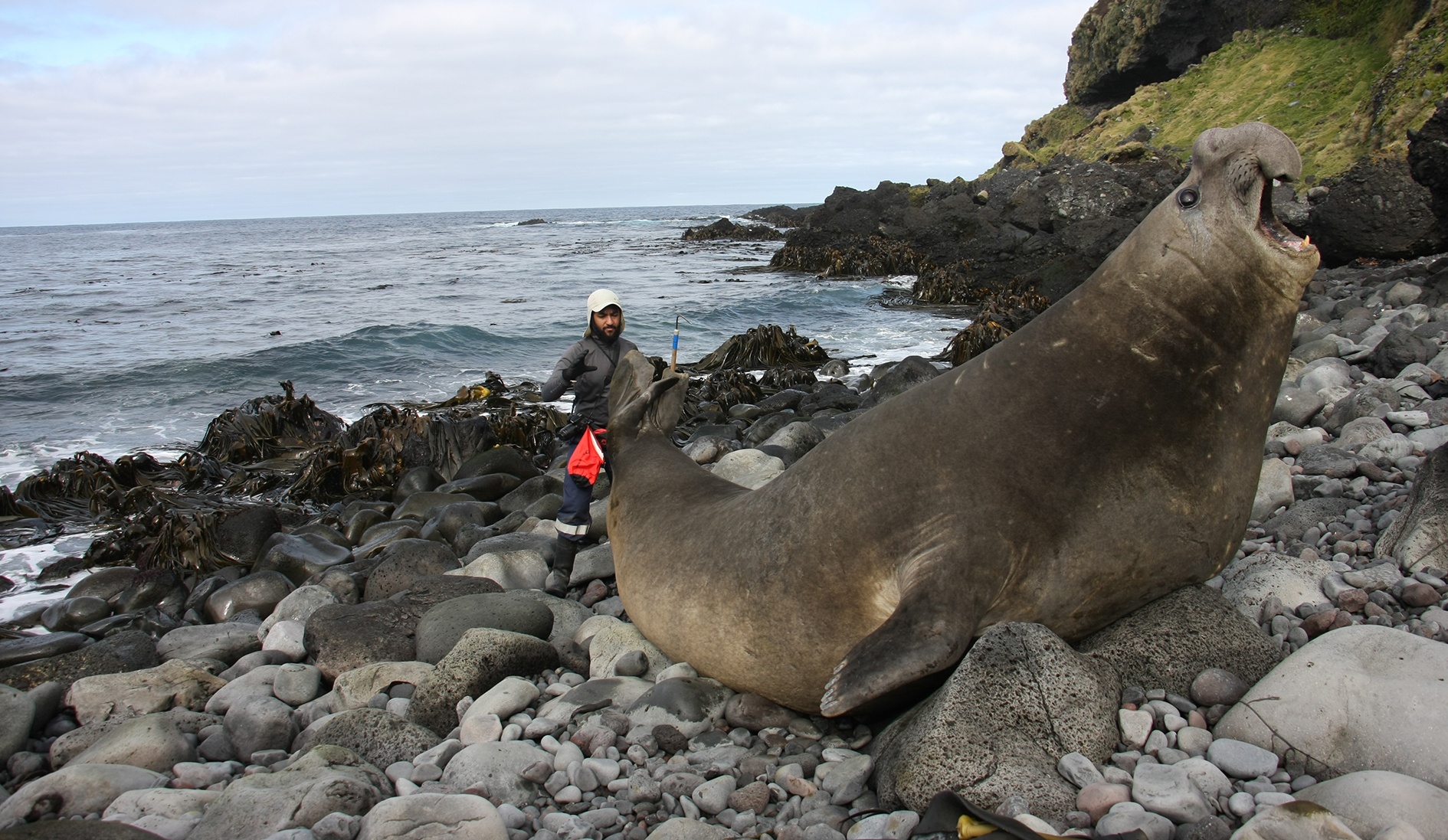
Zafar Monier keeps a safe distance from the business end of an elephant seal beachmaster. One of the largest bulls on the island is known as ‘Bliksem’. Monier describes him as a ‘ferocious guy… a machine with a goliath gene’. He has a harem of 98 cows this year, compared to about 30 last year. (Photo: Dylan Seaton)
Eggeling is part of a three-person team from the University of Pretoria’s Marion Island Marine Mammal Programme, a research project established in 1983 to monitor top predators such as elephant seals, fur seals and killer whales
The island’s once abundant seal populations were historically exploited for blubber and fur from the early 1800s. That came to an end in the 1930s when population numbers dropped too low to remain economically viable.
By monitoring the population of seals and killer whales, the researchers continue to track the recovery of these top predators and their responses to environmental and climate change in the vast Southern Ocean.
Professor Nico de Bruyn, a senior mammal researcher at the University of Pretoria and principal investigator of the island’s marine mammal programme, says nearly 20,000 elephant seals have been marked with tags here over the last 41 years.
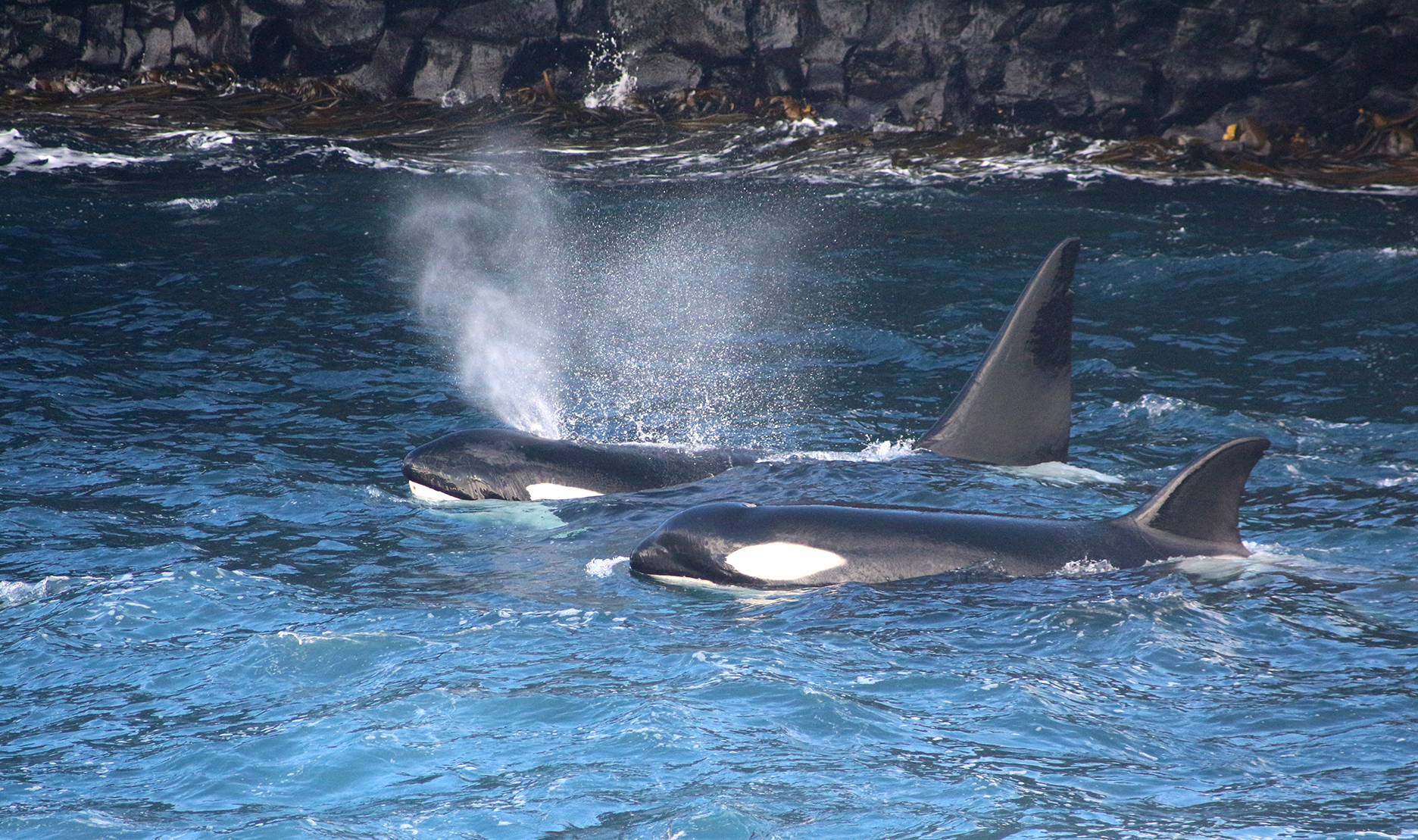
Killer whales and, less frequently, great white sharks, are the elephant seal’s main predators because they are the only sea creatures with teeth long and sharp enough to penetrate the thick skin and blubber of these massive seals. (Photo: Zafar Monier)
“This is the most intensive long-term mark-recapture programme for large mammals in the world,” he says.
Because this is a special nature reserve with no roads or vehicles permitted, the field assistants (known as “sealers” and “whalers”) have to get around on foot while tagging newly-weaned elephant seals or identifying the colour-coded and numbered tags fitted to previous generations of seals.
Their priority is the southern elephant seal, a remarkable species that can dive to depths of over 2km, with adults able to hold their breaths for up to two hours.
Killer whales have also been monitored since 2006, identified by the unique shape or markings on their dorsal fins. Satellite tracking devices are also deployed on both seals and killer whales to track their foraging movements in the Southern Ocean.
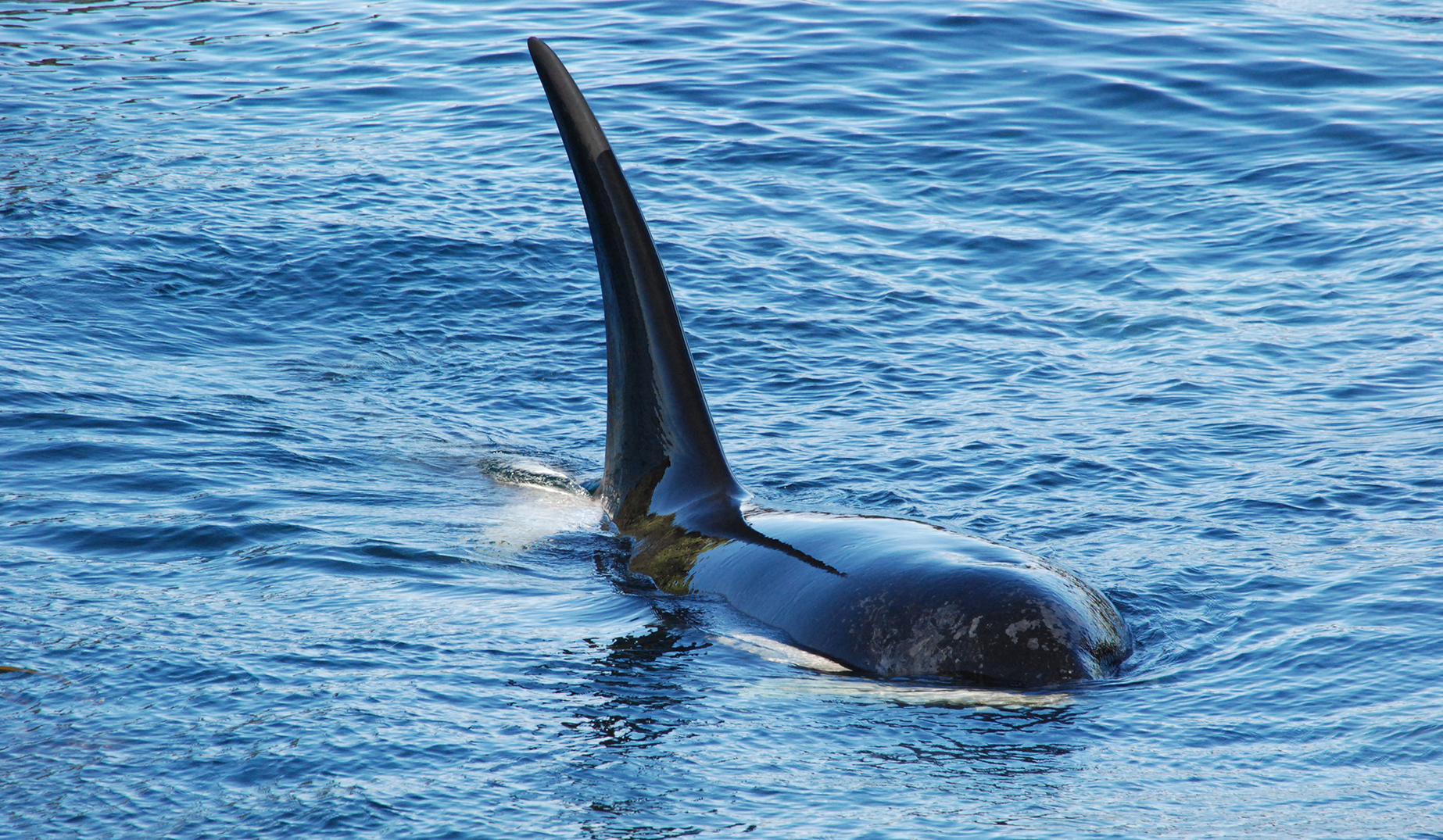
Killer whales off the coast of Marion Island. (Photo: Zafar Monier)
Eggeling, the designated whaler for the past season, ended up walking much further than she bargained for while observing over 37 killer whales over the last year. Her work has entailed regular round trips, camping overnight in several huts erected around the island.
“The huts are small but comfy. There is a bed and a sleeping bag and you dine by candlelight on dried and canned foods and go to bed pretty early.
“But the wind can be insane. Sometimes you step outside in the morning with your backpack and just crumple to the ground, shouting and questioning your life choices as you know that there is still a five-hour walk till the next overnight hut.
“There’s no easy way out of that situation, except to stand up in that driving wind and keep going. It’s freezing and you get to the end of your tether, but eventually, those difficult moments pass if you just press on.”
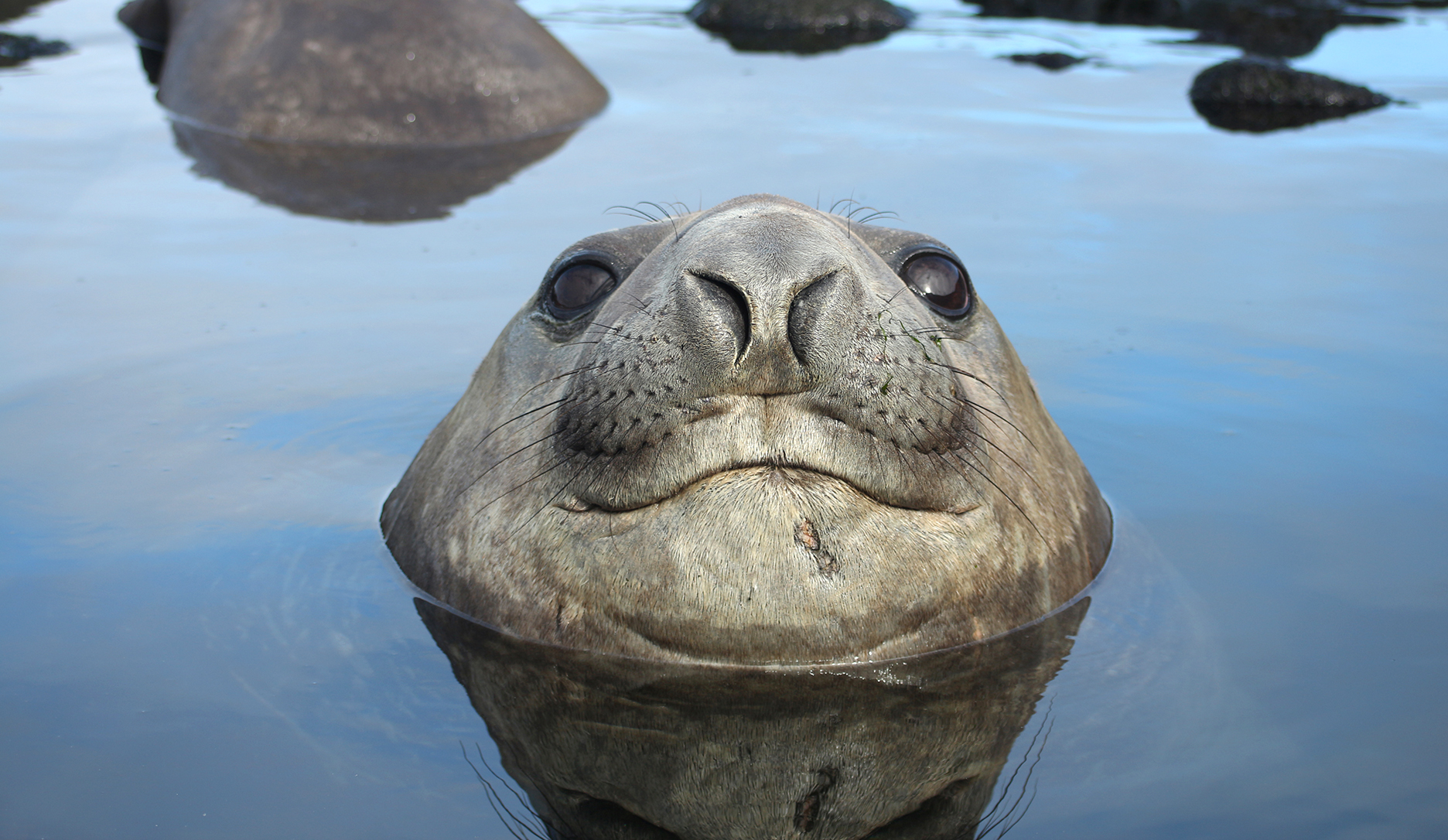
Southern elephant seal mothers suckle their pups for 23 days and then head back to sea, leaving the pups alone to fend for themselves. (Photo: Dylan Seaton)
“I’m definitely going to miss the experience of living simply in this untouched, pristine environment. But I think I have become more resilient … Cape Town may seem like absolute bliss when I get back!”
Her sealer colleague, Zafar Monier, thinks that leaving Marion Island (scheduled for May) is likely to be a bittersweet experience.
“The past year has zoomed past a bit too quickly. I am very excited about seeing my family and friends again — but I will definitely miss this island.”
“Marion requires your all … Your entire life becomes about sealing. There are not really any ‘off’ days. There is no schedule. We don’t get weekends off and we manage ourselves.”
But, he admits, nothing could have prepared him for the extreme weather conditions and challenging terrain.
“It was definitely a jarring experience. You arrive in winter, so you experience the worst immediately.”
Working with wild animals at close quarters also got his adrenalin going.
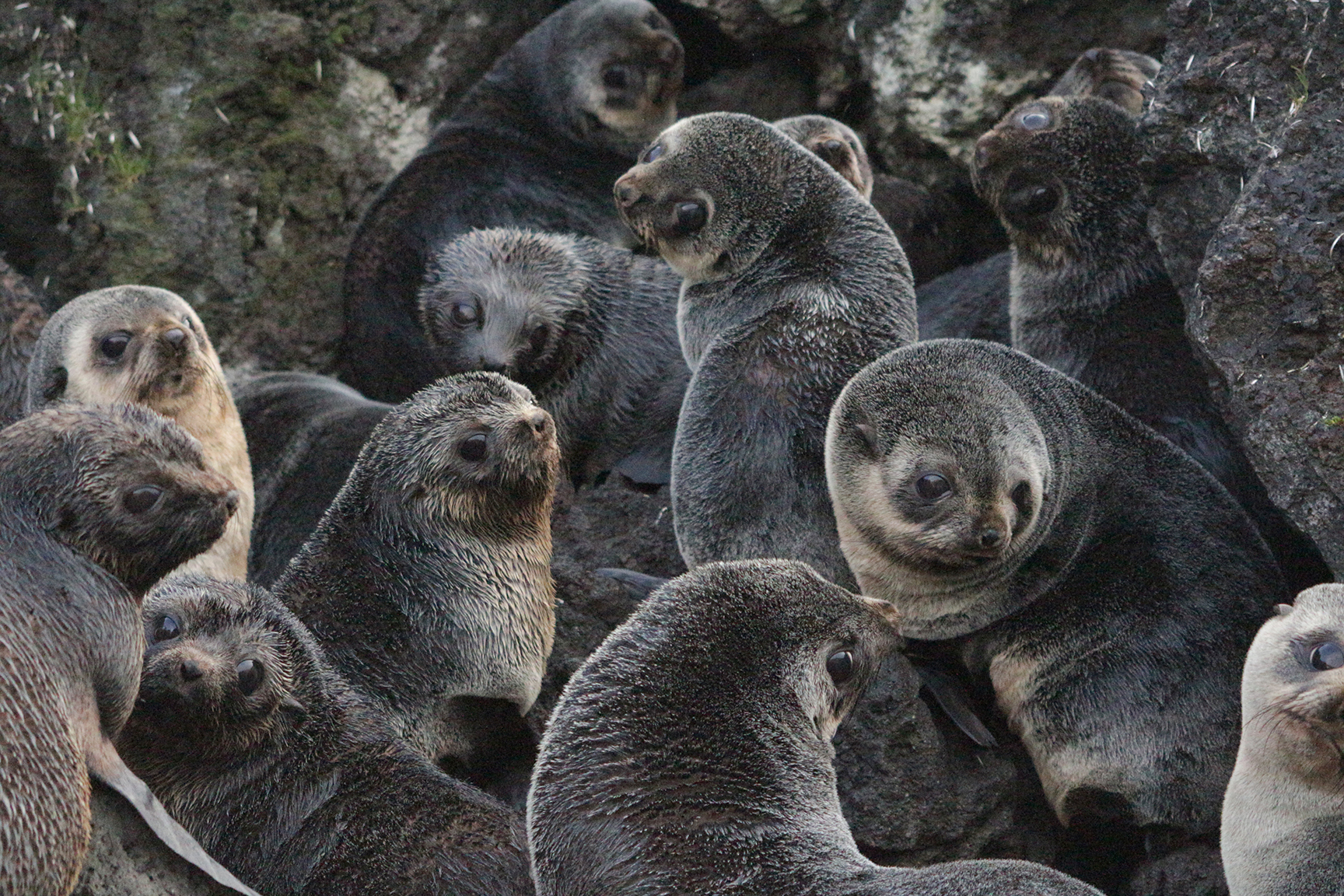
Young seals huddle together in a rookery. (Photo:: Zafar Monier)
“Southern elephant seals are big. Very big. The bulls are up 5m long and can weigh over three tons — yet they are still remarkably agile … often more agile than a person wearing gumboots on slippery rocks.
“Antarctic fur seals are even more agile.
“They can run really, really fast. So, if you need to get away from one, you need to sprint — not jog,” he advises, noting that their scientific name (Arctocephalus gazella) is especially apt.
During regular monitoring patrols, the team sometimes chase after them to check their flippers for ID tags. Not all respond amiably: one of the reasons why the University of Pretoria mammal researchers always carry a “stick”.
Fitted with a blunt metal hook on the end, these stout wooden sticks help to support the researchers while walking over the rough terrain. But they are also invaluable for checking the flipper tags and they can be useful to prod an approaching seal in the chest. This is almost always sufficient to dissuade these inquisitive animals before they do any damage.
“If a seal rushes at you it will inevitably bite the stick first. I’ve had my stick snapped like a toothpick on one occasion.”
During the breeding season, the sticks also serve as a handy platform upon which a scale can be suspended between two sealers, for weighing the seal pups.
This year, the team has tagged 895 elephant seal pups. To do this, the sealers wait until the pups are weaned. The mothers suckle them for 23 days and then depart, leaving the pups alone to fend for themselves.
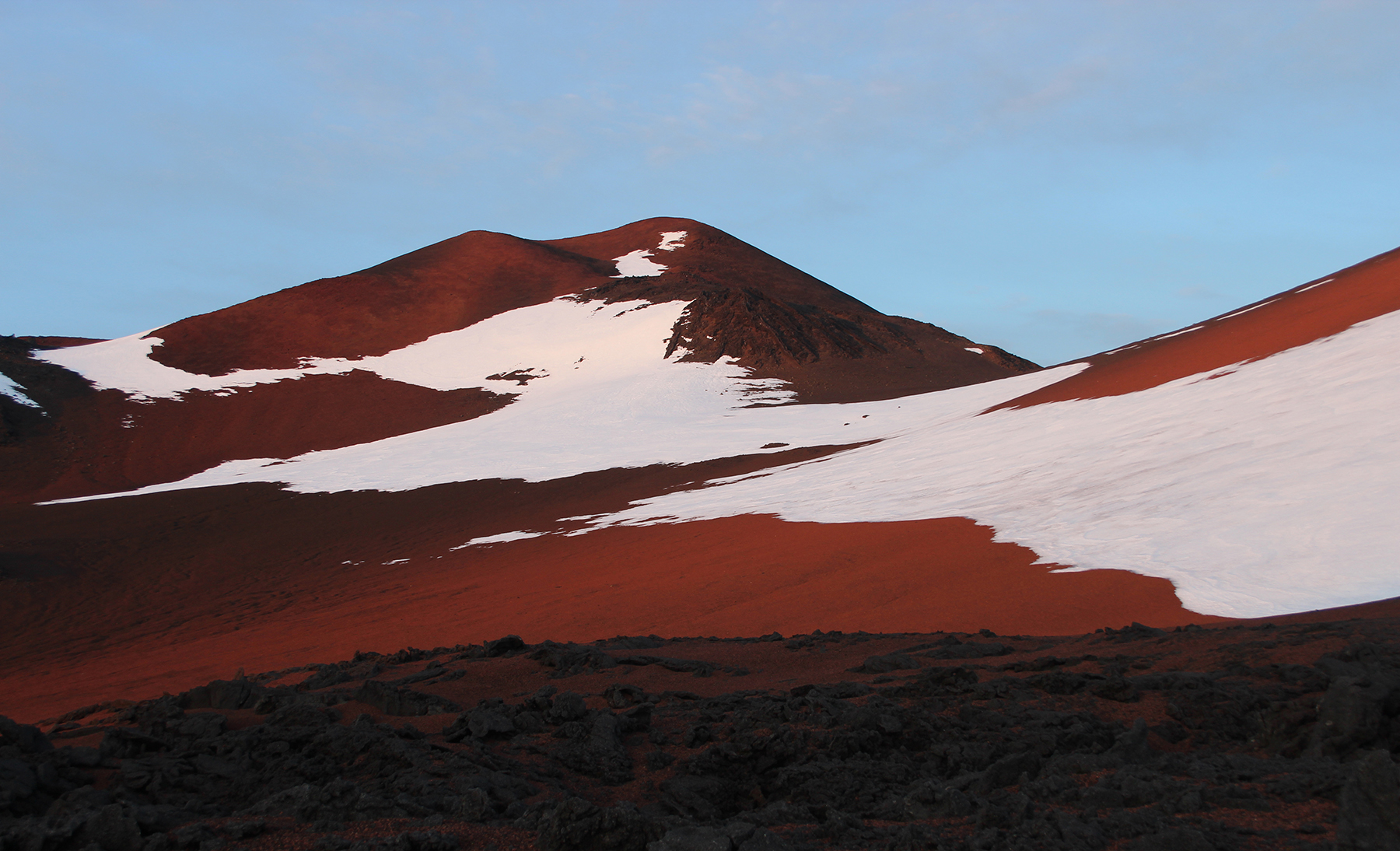
Snow on the high ground. Parts of this volcanic island are devoid of any vegetation. ‘There are times when we have been caught in white-out snow conditions and you end up walking around in circles,’ says Zafar Monier, noting that navigation can become difficult, even though the team members carry GPS devices and radios. (Photo: Zafar Monier)
Monier says the tagging process is very quick (about 90 seconds) and their number one priority is compassion for the animals.
“After that, we count them roughly every 10 days — so we do a lot of walking, about 350km a month.”
(In fact, Monier estimates that he has already walked 4,100 km while patrolling the island. That’s the equivalent of seven one-way trips from Durban to Johannesburg — while wearing gumboots).
But despite strict safety procedures, accidents still happen — as sealer Dylan Seaton discovered late last year.
“Charging elephant seals are a regular occurrence, which can be incredibly frustrating, especially when the weather is not in your favour,” says the University of the Western Cape hydrology graduate, who has also spent time as a meteorologist on Gough Island.
“As the year progresses, your reaction time improves and your eyes become more trained, making the work easier for you and the seal. As with all jobs that deal with wild animals, close calls are regular.
“This is why working in pairs is crucial. We have a system where one person will read the tags and dictate, while the other scribes and keeps an eye out for any danger.”
All the same, adult female elephant seals are very protective of pups.
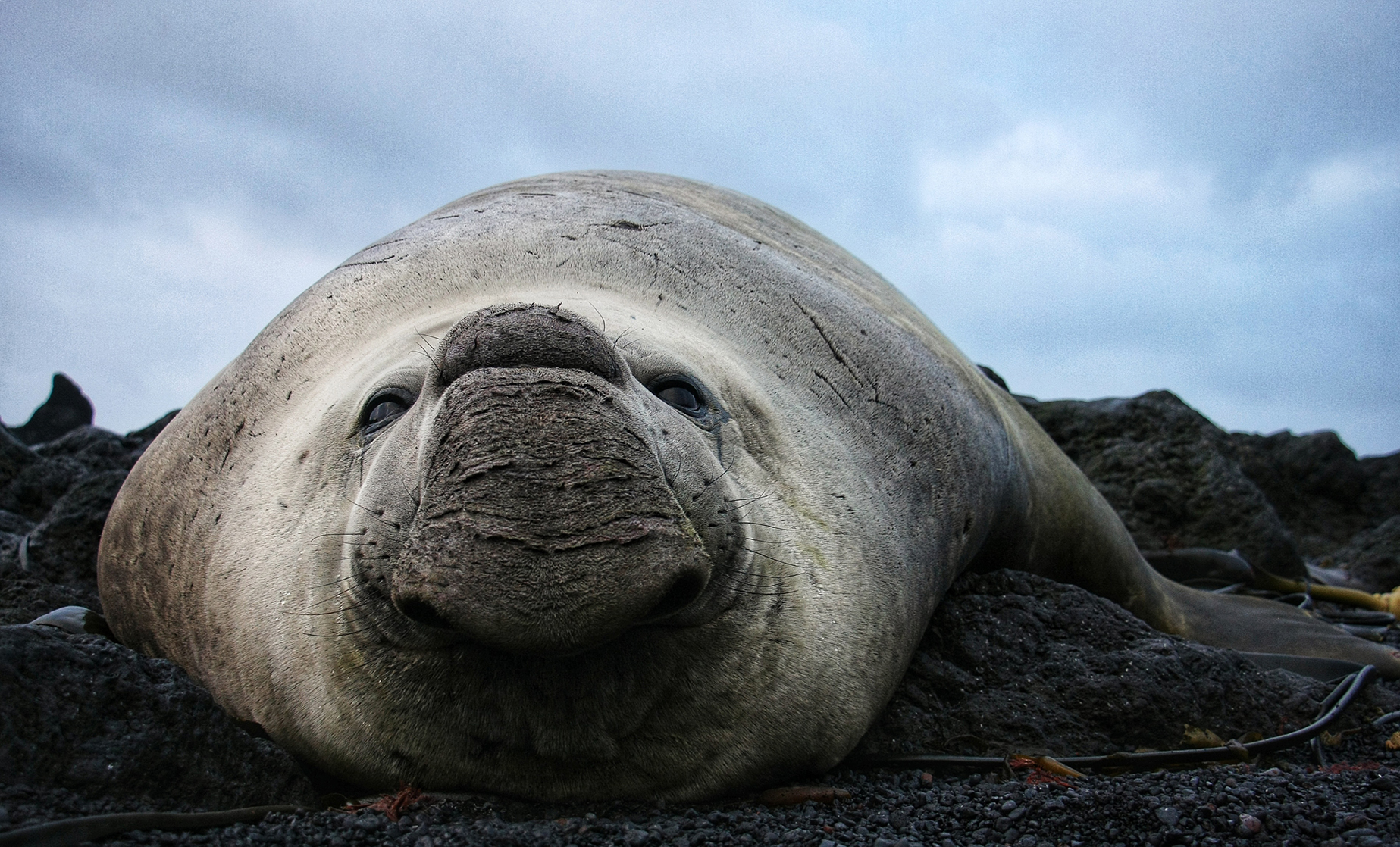
One of the most outstanding features of an elephant seal bull is a large inflatable proboscis which acts a bit like a megaphone to amplify their roars while defending their harems. (Photo: Dylan Seaton)
“If one gets too close, the moms often become aggressive. Unfortunately, while trying to read a tag on one seal, another mom managed to sneak up behind me, biting my leg and hand. Thankfully, there was no permanent damage — just a few stitches and several days off my feet. Then I was back out in the field, continuing my work as usual,” he recalls, matter of factly.
One of the highlights of Seatons’s year on Marion Island was witnessing a dramatic encounter between killer whales and an elephant seal.
“Around 15 orcas cornered an adult bull into a nook, and for over two hours they attempted to catch him. With the calm winds and low swell that day, we had an exceptional view of the entire hunt, and — despite the bull being outnumbered — he still managed to escape, as well as become a beachmaster (dominant bull).”
But there is one task he will not miss about Marion: collecting, washing and sieving the pungent remains of the seals’ meals.
Though he wrote a poem entitled Ode to the Scatman in the Marion Island M80 expedition magazine, The Wanderer, Seaton states: “I can tell you it’s not much of a joy. . . By its purest definition, the seal scat work is literally a shit job. It’s vile.
“After collecting scat in the field, we sort through the remnants back at the laboratory to get an idea of fur seal foraging behaviours, which can answer some of the research questions.
“We look for specific remnants that are not digested in the gut, i.e., fish bones, ear bones, eye lenses and unfortunately even plastics. While we cannot pinpoint the exact origin of the prey, we can get an idea of what, where and how much the fur seals eat.”
Despite the foul task, it’s important work, he concedes.DM
This article was supported by KAMuses.



















 Become an Insider
Become an Insider
“those difficult moments pass if you just press on” … just about sums up the philosophy/mantra that guides Ultra distance runners .. to the ‘finish’ line ! Thanks for sharing an illuminating experience of three intrepid persons .
Fascinating!
Such a great read, thanks!
What an incredible read! And unbelievable experience. Very special people who can do this important work. Admittedly I laughed out loud at the name of the big ass seal called ‘Bliksem’.
So good to see my 2nd cousin’s son, Dylan Seaton, doing so well. Hope to see him when he returns to Cape Town in May.